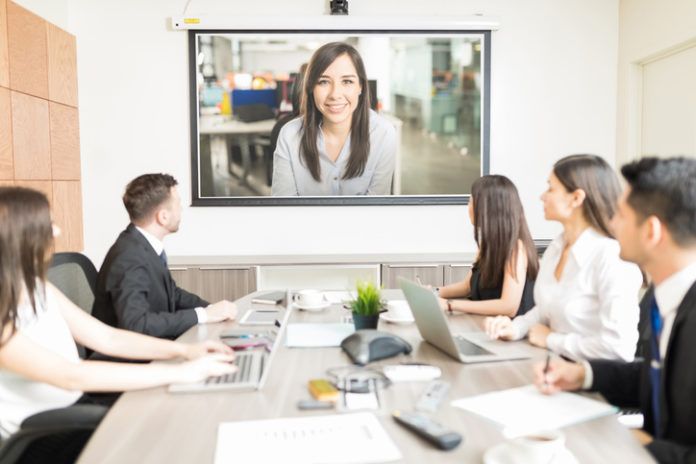We often talk about the way that modern video collaboration tools can replicate face-to-face experiences, making people feel like they’re really there in the room with someone else. But in terms of implementation, the conversation usually revolves around cameras and displays —and often ignores other important components. To create a user experience that truly feels personal, organizations must pay attention to the following key factors.
1. Take a Tactical Approach to High-Quality Audio
Conference room audio technology has come a long way. Today, manufacturers such as Yamaha and Sennheiser, which have traditionally been associated with music production and recording, make microphones and speakers that integrate with enterprise video collaboration systems. After selecting high-quality equipment, organizations must make sure to arrange components in a way that will facilitate top performance. For example, microphones should be placed as close to human speakers (the people talking) and as far away from electronic speakers (the devices delivering sound) as possible, because placing mics next to electronic speakers can cause feedback. We see too many conference rooms where electronic speakers are placed near eye level. With this setup, the people at the front of the room are often left practically covering their ears, while people at the back of the room can barely hear. It’s typically a better move to place electronic speakers up high. If you’ve ever been in a video session with sound problems, you know that crystal-clear picture quality doesn’t matter when you can’t hear what’s going on. Getting audio right is absolutely essential to creating a positive experience.
2. Bring Meetings to Life by Enabling Camera Movement
Some video collaboration systems have cameras that automatically pan, tilt and zoom to follow the action. For participants at remote sites, this feature leads to an experience that is immeasurably more dynamic than one with a stationary camera.
3. Pay Attention to Acoustics
Parallel walls and hard, reflective surfaces are the enemies of good sound quality. Professional videoconferencing rooms need acoustical treatments to help prevent reverb and echoing, and several vendors offer aesthetically pleasing solutions that help to mimic the conditions of a recording studio. Acoustic geofencing is also an option. This solution uses inaudible white noise to block out sounds from outside the conference room, leading to a better meeting experience with fewer distractions.
4. How Lighting and Background Set the Right Mood
Cameras and displays have gotten so good that they can sometimes make up for subpar lighting, either brightening or dimming the picture automatically to make it look better. Still, organizations should take lighting into consideration when designing video collaboration spaces. Dimmable lights give participants the ability to set a mood for a meeting and quickly adjust things if needed. Further, automated window shades can prevent backlighting and screen glare. We’re learning that people will be more likely to use videoconferencing solutions if they have tools that can hide their messy home offices and hotel rooms. Some video collaboration solutions now come equipped with a background-blurring feature that helps keep the focus on the participant. Want to learn more about how to deliver a better collaboration experience? Visit CDW.ca/collaboration







